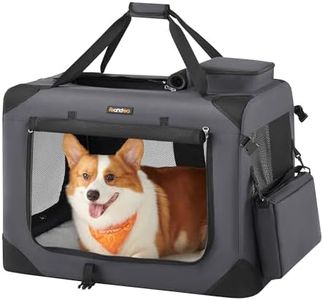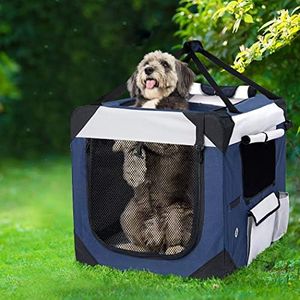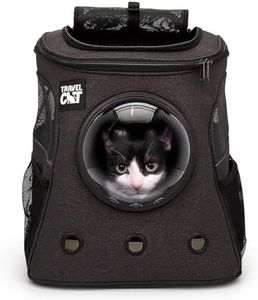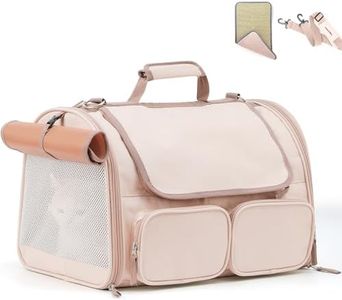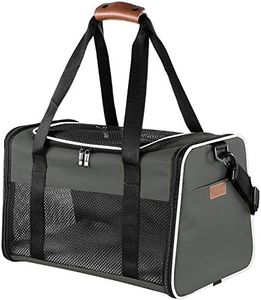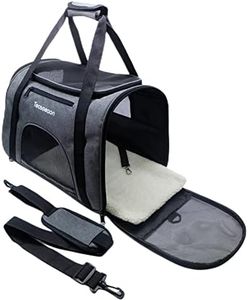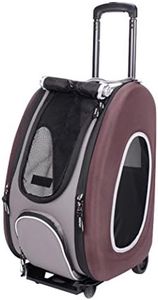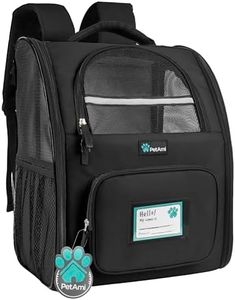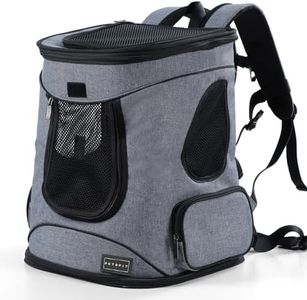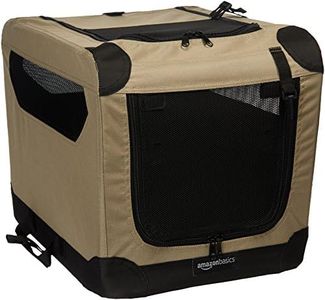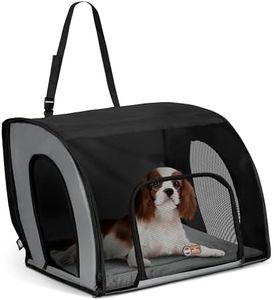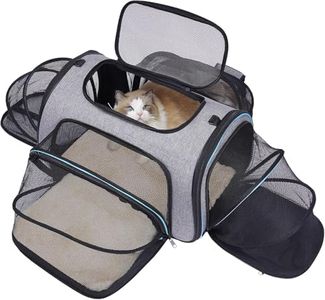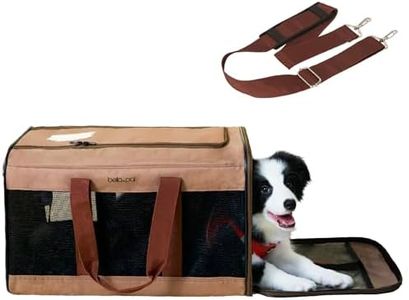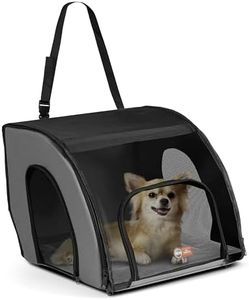We Use CookiesWe use cookies to enhance the security, performance,
functionality and for analytical and promotional activities. By continuing to browse this site you
are agreeing to our privacy policy
10 Best Soft Cat Carriers
From leading brands and best sellers available on the web.Buying Guide for the Best Soft Cat Carriers
Choosing a soft cat carrier can make travel, trips to the vet, or moving house much easier for both you and your feline friend. The right carrier keeps your cat safe, comfortable, and secure, while also being convenient for you to use. It’s important to look for features that meet your cat’s size and temperament, match how you plan to use the carrier, and make transporting your pet as stress-free as possible.Size and DimensionsSize and dimensions refer to the overall space inside the carrier and how much room your cat will have. This is important so your cat can turn around, stand up, and lie down comfortably, which reduces stress and prevents injury. Sizes are often described by length, width, and height. Small carriers work best for kittens or small breeds; medium carriers suit average-sized cats, while large carriers are for bigger breeds or multi-cat transport. To pick the right size, measure your cat from nose to base of the tail and from the floor to the top of the head, then add a few extra inches for comfort.
Material and DurabilityMaterial and durability refer to what the carrier is made of (usually nylon, polyester, or canvas) and how well it holds up to wear and tear. Strong, puncture-resistant fabric with sturdy zippers and seams is important for keeping your cat safely contained. Carriers range from lightweight but less sturdy models to reinforced designs with thicker fabric and rigid frames. Consider how active or anxious your cat is: if they’re likely to scratch or claw, pick something with strong reinforcements for peace of mind.
VentilationVentilation means how much fresh air your cat gets while inside the carrier. This is provided by mesh panels, windows, or vents on the sides or top. Good airflow is crucial to keep your cat comfortable and prevent overheating or stuffiness. Some carriers have full mesh sides for maximum airflow, while others feature smaller windows, offering more privacy. Choose more ventilation if your cat travels long distances or gets nervous; less may suit shy cats who prefer privacy.
Entry PointsEntry points refer to the openings you use to get your cat in and out of the carrier, commonly top-loading, side-loading, or both. This matters because some cats are easier to load from the top, while side doors may be less stressful for others. Single openings are simpler but less flexible; dual openings make it easier if your cat is resistant or nervous. If your cat dislikes carriers, having a top entry can be a real advantage.
Carrying OptionsCarrying options are the ways you can transport the carrier itself, such as with handles, shoulder straps, or backpack-style straps. This affects your comfort and mobility, especially if you walk long distances or travel by public transport. Some carriers have padded shoulder straps, handles, or can convert to backpacks. If you need your hands free or expect to carry your cat for longer, a backpack or shoulder strap can make things much easier.
Ease of CleaningEase of cleaning describes how simple it is to wipe down or wash the carrier in case of accidents or shedding. Some carriers come with removable, washable pads while others may have plastic inserts or waterproof bottoms. Quick and easy cleaning is important for hygiene and odor control. If your cat gets nervous and can have accidents, or if you travel often, pick a carrier with machine-washable or wipeable features.
Safety FeaturesSafety features cover elements like secure zippers, locking mechanisms, seat belt loops, or inner leash tethers to prevent escapes. These keep your cat secure during sudden stops or if the carrier shifts while driving. For car travel, look for carriers that can be strapped in with seat belts. If your cat is an escape artist or you plan to travel frequently, prioritize extra security features.
